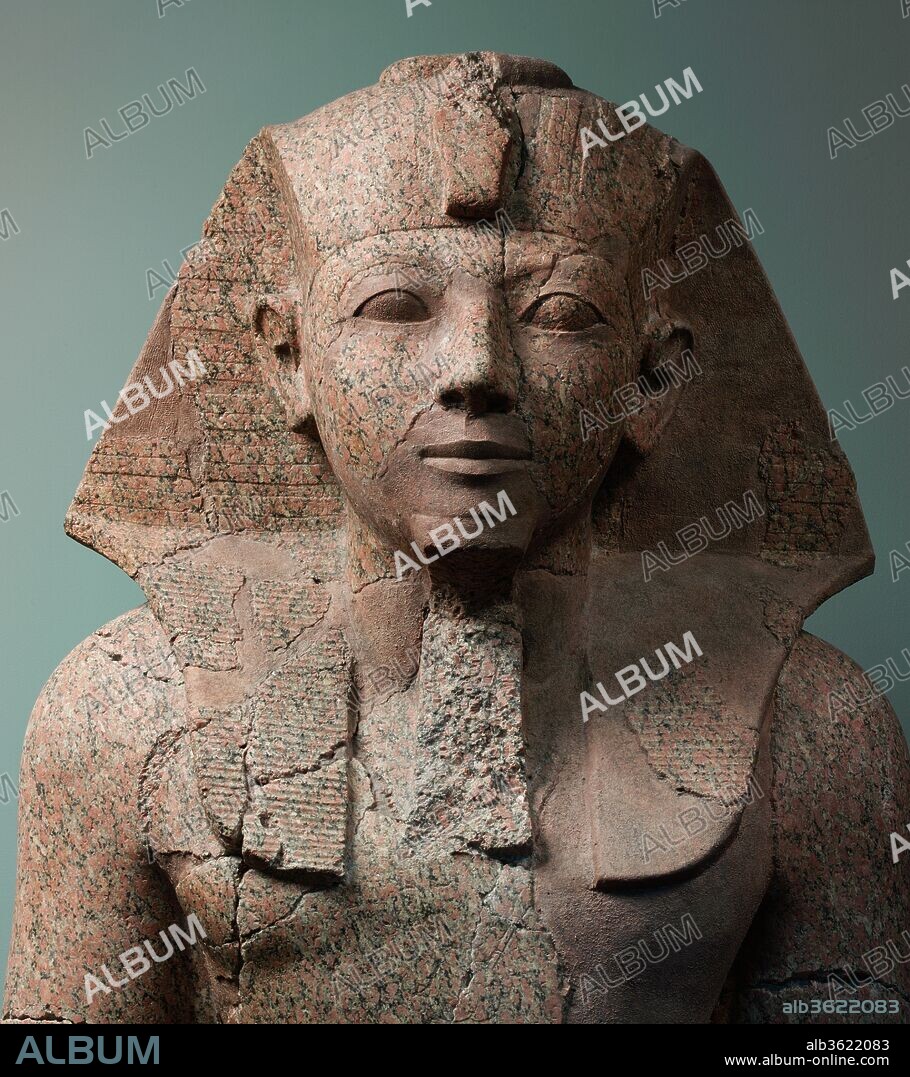alb3622083
Large kneeling statue of Hatshepsut

|
Añadir a otro lightbox |
|
Añadir a otro lightbox |



¿Ya tienes cuenta? Iniciar sesión
¿No tienes cuenta? Regístrate
Compra esta imagen.
Selecciona el uso:

Título:
Large kneeling statue of Hatshepsut
Descripción:
Traducción automática: Gran estatua arrodillada de Hatshepsut. Dimensiones: alto 295,9 cm (116 1/2 in); ancho 82,6 cm (32 1/2 in); profundidad 149,9 cm (59 in). Dinastía: Dinastía 18. Reinado: reinado conjunto de Hatshepsut y Tutmosis III. Fecha: ca. 1479-1458 a. C. Esta estatua arrodillada de tamaño superior al natural y otras dos de la colección (29.3.1 y 30.3.1) se hicieron para flanquear el camino procesional a lo largo del eje del templo de Hatshepsut en Deir el-Bahri. Representan a Hatshepsut como el rey egipcio ideal: un joven en la flor de la vida. Cada estatua tiene una inscripción que incluye su nombre personal, Hatshepsut (literalmente , la más importante de las mujeres nobles ) y/o un pronombre femenino o una forma verbal, por lo que la vestimenta y el físico masculinos no tenían la intención de engañar a la gente para que pensara que era un hombre. Aunque tradicionalmente el trono egipcio pasaba de padre a hijo, cuando surgía la necesidad, se aceptaba una gobernante femenina. Sin embargo, los adornos y el simbolismo asociados con la realeza eran abrumadoramente masculinos y los escultores de esta estatua seguían una tradición que se remontaba a más de mil quinientos años. En esta tradición, la imagen pública del rey, ya fuera un bebé, un anciano frágil o, en este caso, una mujer, se mostraba en la forma más poderosa e imponente: un hombre joven y vigoroso o una esfinge con cabeza humana y cuerpo de león (31.3.166). En esta estatua, Hatshepsut lleva el nemes ( paño para la cabeza), la barba postiza y el shendyt (falda escocesa) que forman parte de las insignias estándar del rey.
Large Kneeling Statue of Hatshepsut. Dimensions: H. 295.9 cm (116 1/2 in); w. 82.6 cm (32 1/2 in); d. 149.9 cm (59 in). Dynasty: Dynasty 18. Reign: Joint reign of Hatshepsut and Thutmose III. Date: ca. 1479-1458 B.C..
This over life-size kneeling statue and two others in the collection (29.3.1 and 30.3.1) were made to flank the processional pathway along the axis of Hatshepsut's temple at Deir el-Bahri. They depict Hatshepsut as the ideal Egyptian king - a young man in the prime of life. Each statue has an inscription that includes her personal name, Hatshepsut (literally foremost of noblewomen) and/or a feminine pronoun or verb form, so the masculine garb and physique were not intended to trick people into thinking that she was a man.
Although traditionally the Egyptian throne passed from father to son, when the necessity arose, a female ruler was accepted. However, the trappings and symbolism associated with kingship were overwhelmingly masculine and the sculptors of this statue were following a tradition that extended back more than fifteen hundred years. In this tradition, the public image of the king, whether he was an infant, a frail old man or, in this case, a woman, was shown in the most powerful and imposing form - a young, vigorous man, or a human-headed lion-bodied sphinx (31.3.166). In this statue, Hatshesut wears the nemes-headcloth, false beard, and shendyt-kilt that are part of the standard regalia of the king.
Técnica/material:
granite
Periodo:
NEW KINGDOM
Museo:
Metropolitan Museum of Art, New York, USA
Crédito:
Album
Autorizaciones:
Tamaño imagen:
3732 x 4200 px | 44.8 MB
Tamaño impresión:
31.6 x 35.6 cm | 12.4 x 14.0 in (300 dpi)


 Pinterest
Pinterest Twitter
Twitter Facebook
Facebook Copiar enlace
Copiar enlace Email
Email
